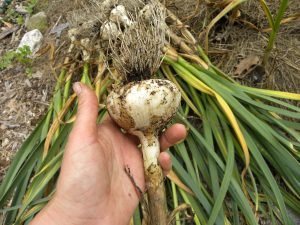 In the heat and long days of July we really start to reap what we have sown: beans, summer squash, cucumbers, eggplant, basil, garlic and more. Now the challenge is to keep up with bringing the produce in and preserving it.
In the heat and long days of July we really start to reap what we have sown: beans, summer squash, cucumbers, eggplant, basil, garlic and more. Now the challenge is to keep up with bringing the produce in and preserving it.
By this time of year, I hope to have planned well enough that we are focused on maintenance and harvest. Big projects and expansions are best done in the cooler weather of spring and fall. This year hasn’t quite worked out that way. Even when it does, it’s just a busy time 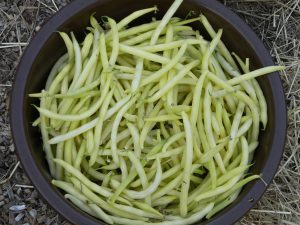 of year for northern food growers. I try to stay calm and not waste energy worrying about what I haven’t done yet – but there are days that my to-do list brings me to tears I admit!
of year for northern food growers. I try to stay calm and not waste energy worrying about what I haven’t done yet – but there are days that my to-do list brings me to tears I admit!
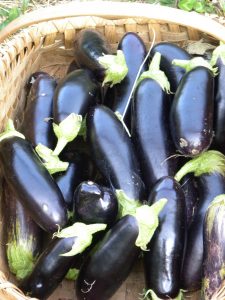
Lots of Eggplant
Have you seen The Biggest Little Farm yet? I highly recommend it and Seacoast Permaculture plans to bring it back to our area this winter 2020. There’s a scene from their early days on the farm when co-owner Molly Chester tells us that it seems to her like every time she checks something off her list she adds ten more items. A lot of us can relate to that, right?!
It’s also a beautiful and satisfying time of year, especially when our lack of drought has led to healthy productive plants. So, I’ll share photos here – a virtual tour of our annual garden in July. Then… back to work for me!
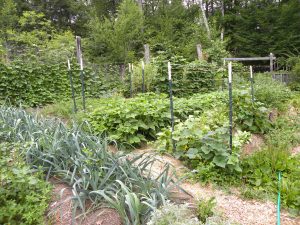
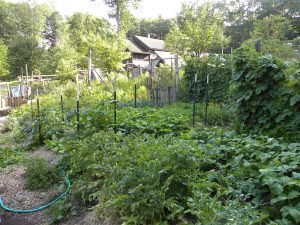
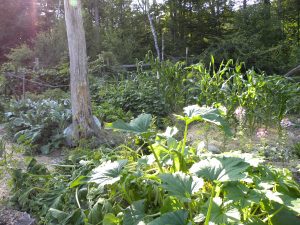
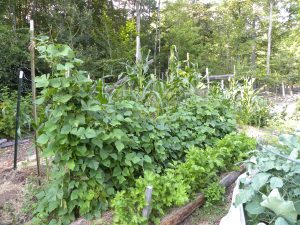
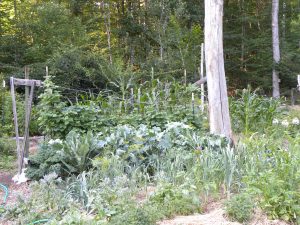
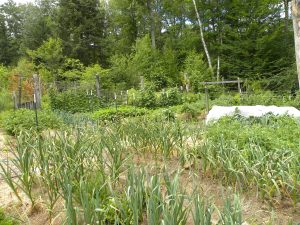
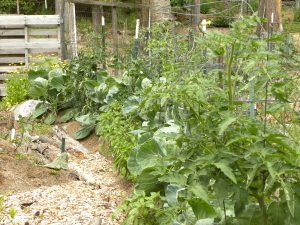

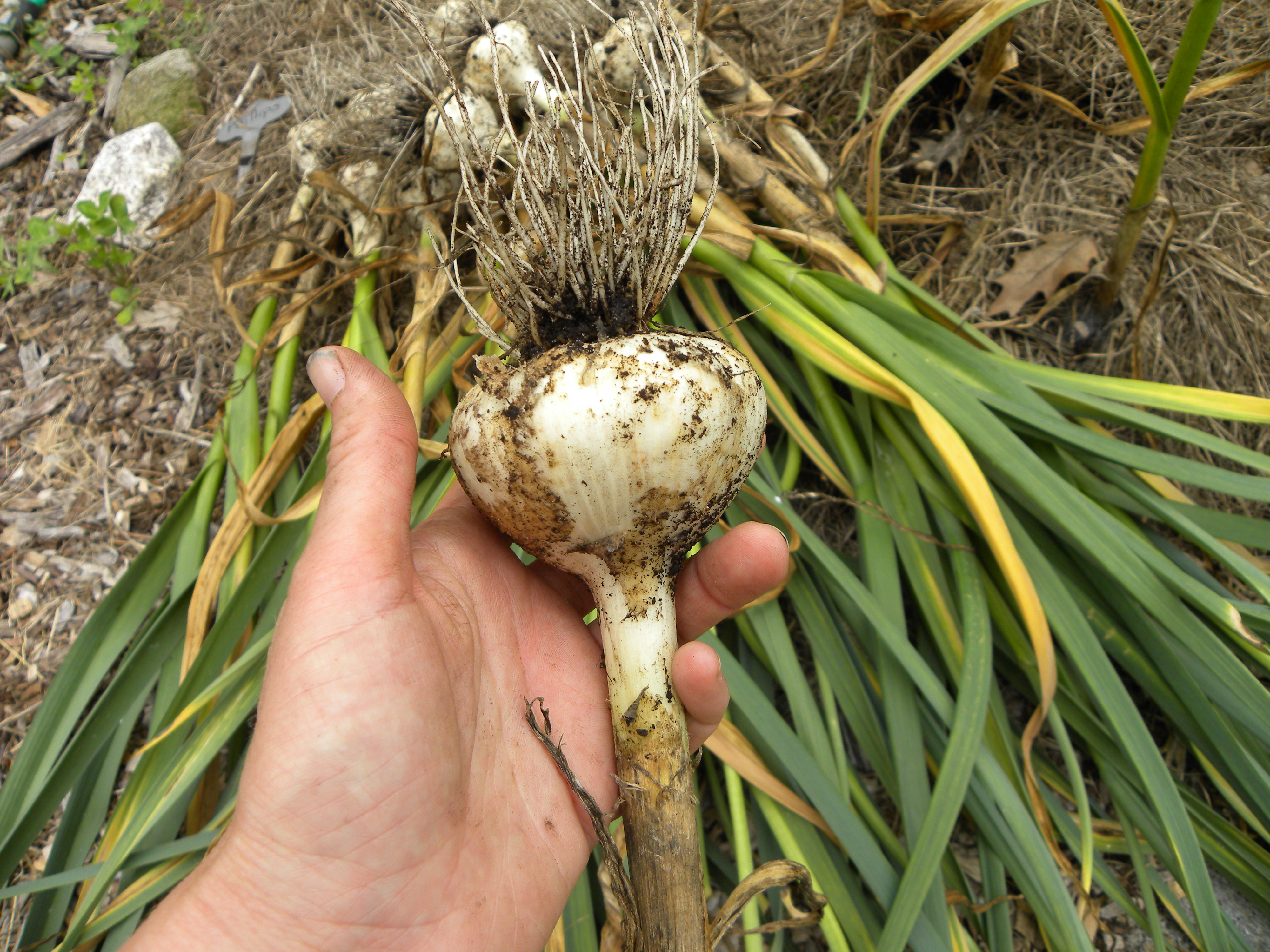

You have excellent soil fertility. My gardens at Wagon Hill are suffering from lack of animal fertility. Although we bring in compost and I mulch with chicken coop cleanings, it is not enough. The compost we buy doesn’t have any manure in it. I added manure when I first started my plots but that was 8 years ago. Another reminder that stacking functions and having a complete cycle is so important.
Hi Ellen – yes, where we have worked on it, our soil is very alive and fertile. Hauling tons (I’m sure literally) of material these past 10 years has paid off. Could you make some of your own compost on site? While we do use a lot of animal manure, there are a few other places I think our success comes from: seaweed brings back trace minerals; coffee grounds is a good nitrogen boost and attracts worms; using tree materials – wood chips in the path, branches in our sheet mulch/hugel beds, and leaves for mulching – to also get the nutrients that have sunk down in the soil back into the loop. And the huge worms (nightcrawlers) we get in the wood chip paths are amazing. There are areas when you brush away the wood where it’s essentially all worm castings as the next layer.
All that said, I also agree that animals go together with plants making diversified farms like we saw in The Biggest Little Farm thrive!